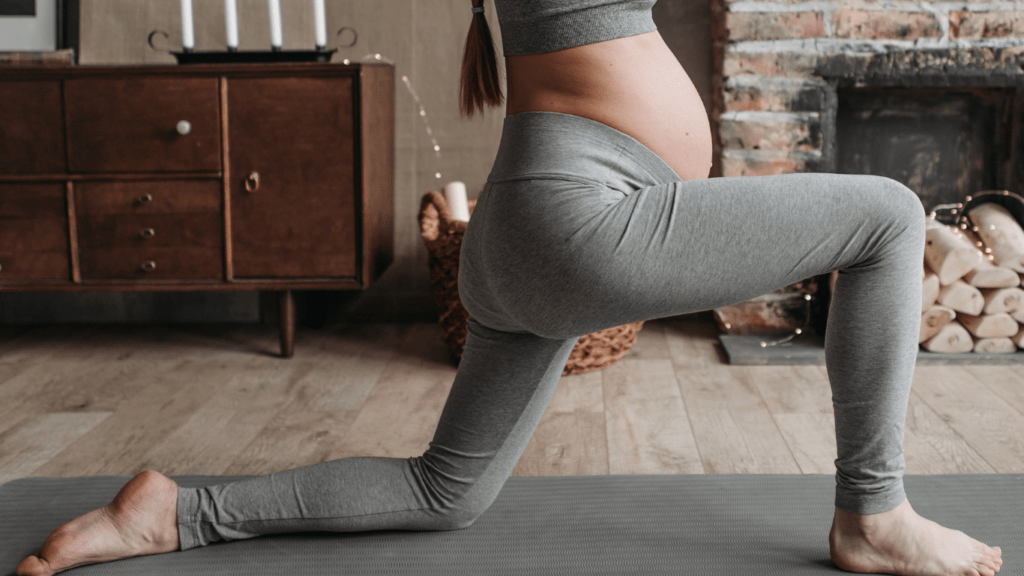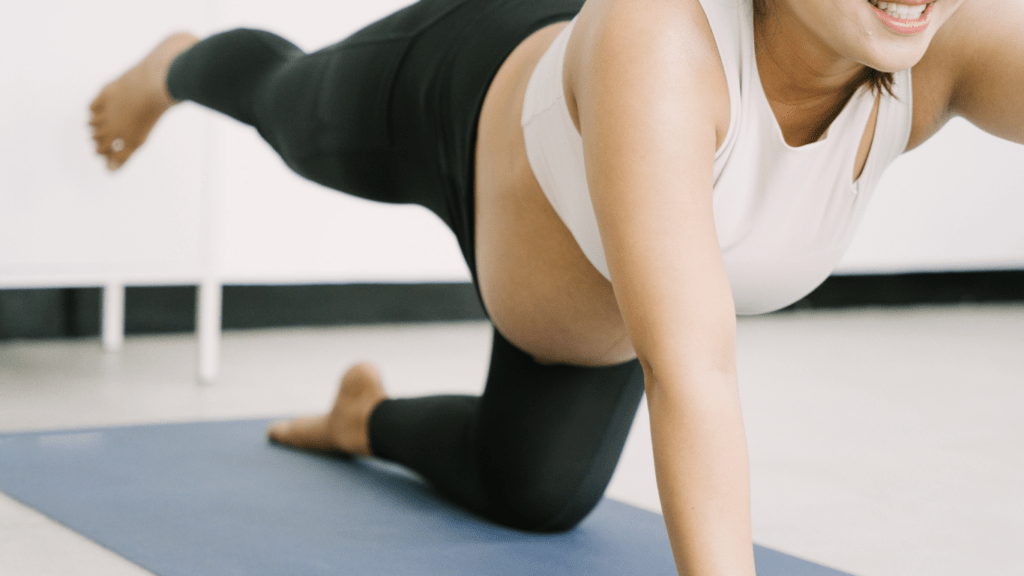Being a mom can feel like a whirlwind of chaos, with endless to-do lists and constant demands on your time. Amidst the hustle and bustle, it’s easy to lose sight of your own well-being. That’s where yoga and meditation come in.
These practices offer a sanctuary a chance to reconnect with yourself and find moments of peace in your busy life. I’ve discovered that incorporating yoga and meditation into my routine not only helps me manage stress but also enhances my overall happiness.
Whether you’re a seasoned yogi or a complete beginner, these practices can transform your daily experience. Join me as we explore how to weave mindfulness into motherhood and reclaim that much-needed tranquility.
Yoga and Meditation for Moms: Finding Peace Amid Chaos
Yoga and meditation serve as powerful tools for moms grappling with the chaos of daily life. These practices cultivate mindfulness and create a sanctuary for self-care. I’ve found that dedicating even a few minutes each day to yoga or meditation can significantly reduce stress and enhance overall well-being.
Benefits of Yoga for Moms
- Physical Health: Yoga improves flexibility, strength, and posture. Practicing regularly can alleviate common ailments like back pain, especially from lifting children or sitting for long periods.
- Mental Clarity: Yoga encourages focus and concentration. The combination of breath work and movement creates a meditative state, enhancing cognitive function.
- Emotional Balance: Yoga promotes emotional stability, helping to combat anxiety and irritability. Each asana (posture) helps release tension, fostering a sense of peace.
Benefits of Meditation for Moms
- Stress Reduction: Meditation reduces cortisol levels, the primary stress hormone. Spending just 10 minutes daily can transform my mental clarity and emotional resilience.
- Improved Sleep: Regular meditation practice enhances sleep quality. It helps settle the mind, making it easier to fall asleep and stay asleep despite daily chaos.
- Enhanced Self-Awareness: Meditation cultivates greater self-awareness. I become more in tune with my needs and emotions, aiding in personal growth and relational dynamics.
Integrating Yoga and Meditation into Daily Routines
- Morning Rituals: Starting the day with a short yoga sequence or meditation can set a positive tone. It creates a mindful moment before diving into the day’s responsibilities.
- Scheduled Breaks: Carving out specific times for yoga or meditation throughout the day offers focused stress relief. Even a five-minute session during a child’s nap can be transformative.
- Family Involvement: Engaging in yoga or meditation with children fosters bonding and models healthy habits. Family sessions encourage a supportive atmosphere where mindfulness becomes a shared value.
Resources for Moms
- Online Classes: Many platforms offer yoga and meditation classes tailored for moms. I recommend trying platforms like Yoga with Adriene or Headspace for guided sessions.
- Mobile Apps: Apps like Calm and Insight Timer feature guided meditations and yoga routines. They help maintain a consistent practice, regardless of schedule chaos.
- Local Community: Exploring local classes or community groups provides social support. Connecting with other moms enhances motivation and accountability.
Incorporating yoga and meditation into my life creates a vital sanctuary amid the chaos of motherhood. These practices not only foster personal well-being but also posit a conducive environment for my family’s emotional health.
Benefits of Yoga and Meditation
Incorporating yoga and meditation into my routine offers numerous benefits, especially for moms navigating the chaos of daily life. These practices not only enhance physical health but also improve mental well-being.
Physical Health Benefits
Yoga enhances physical health in several ways. It improves flexibility, allowing my body to move more freely and reducing the risk of injury. It also builds strength, especially in core muscles, which supports better posture and alignment.
Regular practice boosts energy levels, aiding me in keeping up with the demands of motherhood. Moreover, yoga promotes better breathing, which increases oxygen flow and can enhance overall vitality. Research indicates that yoga can also lower blood pressure and decrease chronic pain, making it an effective practice for managing various physical ailments common among moms.
Mental Health Benefits
Meditation significantly contributes to mental health improvements. It reduces stress by promoting relaxation and decreasing the production of stress hormones like cortisol. Incorporating meditation into my daily routine has improved my sleep quality, allowing me to feel more rested and energized for the day ahead.
Additionally, regular meditation increases self-awareness, helping me understand my emotions and reactions better. This heightened mindfulness cultivates emotional balance, fostering a positive mindset and resilience against daily challenges.
Studies suggest that consistent meditation practice can enhance focus and attention, making it easier to tackle tasks efficiently, even amidst distractions.
Incorporating Yoga into Daily Life
Incorporating yoga into daily routines offers moms effective ways to cultivate tranquility and resilience amidst everyday challenges. By embracing short practices and creating dedicated environments, it’s possible to enhance overall well-being.
Short Practices for Busy Moms
Integrating brief yoga sessions into busy schedules provides significant benefits without requiring extensive time commitments. Moms can engage in 5 to 10-minute practices, focusing on specific poses like:
- Cat-Cow: This pose improves spine flexibility and relieves back tension.
- Child’s Pose: This restorative pose fosters relaxation and calms the mind.
- Downward Dog: This position boosts energy and strengthens muscles.
These quick practices can easily fit into morning routines or midday breaks, providing opportunities to recharge. Implementing mindful breathing exercises alongside physical poses enhances mental clarity. Consistency matters; integrating these short sessions daily builds a solid foundation for stress reduction.
Creating a Comfortable Space
Establishing a designated space for yoga cultivates an inviting atmosphere that encourages practice. I recommend:
- Choosing a Quiet Area: Select a peaceful spot with minimal distractions.
- Adding Comfort Items: Use a yoga mat, cushions, or blankets to enhance comfort.
- Incorporating Calming Elements: Use plants, candles, or soothing colors to create tranquility.
A comfortable space facilitates deeper relaxation, making it easier to engage in both yoga and meditation. Personalizing the area with elements that resonate—like inspiring quotes or cherished items—can further motivate practice. By nurturing this positive environment, I support my journey toward greater peace and mindfulness amidst motherhood’s chaos.
Meditation Techniques for Moms
Incorporating meditation into my daily routine simplifies the path to finding peace. Here are two effective techniques specifically tailored for moms.
Mindfulness Meditation
Mindfulness meditation focuses on being present in the moment. I sit comfortably, close my eyes, and concentrate on my breath. Whenever thoughts of daily responsibilities arise, I acknowledge them without judgment, then gently return my focus to my breath.
This practice cultivates awareness of my surroundings and emotions. Short sessions of five to ten minutes can effectively ground me and reduce stress throughout my day.
Guided Visualization
Guided visualization invites me to imagine peaceful scenarios. I find a quiet space, close my eyes, and take deep breaths. Then, I visualize a serene landscape, such as a beach or a forest. I immerse myself in the details, from the sound of waves to the smell of pine.
By following audio recordings or apps designed for guided imagery, I deepen my relaxation. This technique helps me escape momentarily from chaos and recharges my mental energy.
Overcoming Challenges
Moms face numerous challenges when trying to incorporate yoga and meditation into their routines. Identifying effective strategies can help navigate these obstacles.
Time Management Strategies
Time management plays a crucial role in integrating yoga and meditation into daily life. To make the most of limited time, I use these strategies:
- Prioritize Short Sessions: Even five to ten minutes of yoga or meditation can provide significant benefits. I often allocate brief pockets of time throughout my day for these practices.
- Establish a Routine: Consistency matters. I create a schedule that includes dedicated time for yoga and meditation, making it part of my daily rhythm.
- Combine Activities: I find ways to multitask, like practicing simple poses with my kids or using guided meditation during family downtime, which makes it enjoyable for everyone.
- Set Reminders: I utilize reminders on my phone or sticky notes in visible places to nudge me towards mindfulness moments.
- Be Flexible: Life is unpredictable, so I adapt my practice to fit my day. If I miss a morning session, I give myself permission to meditate at night.
Addressing Common Misconceptions
Misconceptions can hinder the adoption of yoga and meditation. Here are some misunderstandings that need clarification:
- Yoga is Only for the Flexible: Many believe that only flexible individuals can practice yoga. In reality, yoga accommodates all body types and skill levels. What matters is finding the right style that matches personal ability and comfort.
- Meditation Requires Hours of Silence: A common myth is that meditation demands extensive time and extreme quiet. In truth, even a few minutes of focused breathing can yield immediate stress relief.
- Practicing Yoga and Meditation is Selfish: Some moms feel guilty about taking time for themselves. However, prioritizing self-care enhances personal well-being and allows for better caregiving.
- Yoga is Just Physical Exercise: Though yoga includes physical benefits, it also promotes mental clarity and emotional balance. Understanding this broader impact fosters a deeper appreciation for the practice.
- Meditation Must Be Done Alone: Many think meditation can’t be practiced in the company of others. I often engage in group meditations or family mindfulness exercises, showing that connection can enhance the experience.
By addressing these misconceptions and implementing effective time management strategies, I can overcome the challenges of incorporating yoga and meditation into my life.


 Reginalita Leeons played a vital role in building the supportive environment that Motherhood Tales Pro is known for. With a strong background in wellness and outreach, she guided the development of resources that address the holistic needs of mothers. Her compassionate input ensured that every offering—from blog posts to wellness tools—felt thoughtful, inclusive, and empowering.
Reginalita Leeons played a vital role in building the supportive environment that Motherhood Tales Pro is known for. With a strong background in wellness and outreach, she guided the development of resources that address the holistic needs of mothers. Her compassionate input ensured that every offering—from blog posts to wellness tools—felt thoughtful, inclusive, and empowering.